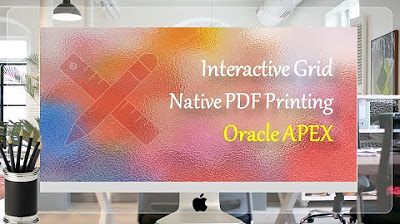How to make a cardboard prototype
Summary
TLDRIn this video, prototyper Andrew Brace introduces the creation of an interactive toaster that allows users to draw designs on a touchscreen, which are then burned onto toast. He emphasizes the importance of early prototyping using simple materials like cardboard to visualize size and form. Andrew shares techniques like scoring for bending cardboard and creating curved shapes, illustrating the iterative nature of design. The goal of prototyping is to translate ideas into tangible formats, facilitating communication and informed decision-making throughout the design process.
Takeaways
- 😀 Prototyping often begins with simple materials like cardboard or paper to visualize ideas.
- 😀 An interactive toaster concept was developed, featuring a touchscreen for custom designs on toast.
- 😀 Sketching ideas beforehand helps clarify size, shape, and material needs.
- 😀 The initial prototype involved basic shapes, helping refine the final design.
- 😀 Fewer parts in a prototype can lead to a more polished appearance.
- 😀 Scoring cardboard allows for bending and creating rounded edges effectively.
- 😀 Building a round knob required stacking smaller circles for dimension.
- 😀 Cutting curved lines in cardboard is challenging; it's easier to make multiple small cuts.
- 😀 Prototyping translates ideas into a tangible format for better understanding.
- 😀 Thoughtful prototyping facilitates informed decision-making for design refinements.
Q & A
What is the main focus of the prototyping process discussed in the script?
-The main focus is on creating an interactive toaster that can replicate designs drawn on a touchscreen by burning them into the toast.
Why do the designers prefer using simple materials like cardboard for initial prototypes?
-Simple materials are cheap and easily accessible, allowing designers to quickly grasp size, scale, and form before committing to more complex materials.
What technique is mentioned for achieving rounded edges in cardboard prototyping?
-The technique mentioned is called scoring, which involves cutting the surface of the material without cutting all the way through, allowing it to bend.
How do the designers approach the initial modeling of the toaster?
-They start with a simple box model, cutting out six sides and taping them together to determine details and sizes for knobs and screens.
What challenge do designers face when cutting curved lines in cardboard?
-Cutting curved lines is challenging because it requires making several small cuts to achieve the desired shape, rather than attempting to cut the entire curve at once.
What benefit does sketching the idea provide before prototyping?
-Sketching helps designers visualize the size and shape of their concept and plan how much material they will need and how to approach the construction.
How does prototyping contribute to the design process?
-Prototyping allows designers to externalize their ideas, making them tangible and understandable to others, which facilitates informed decision-making for refinements.
What is the final goal of the interactive toaster prototype?
-The final goal is to create a functional toaster that allows users to customize their toast with personalized designs.
How does using fewer pieces in the prototype benefit its appearance?
-Using fewer pieces leads to a more refined-looking model since there are fewer part breaks, resulting in a smoother overall design.
What overall lesson does the prototyping process convey?
-The process emphasizes that with thoughtful creativity, any idea can be communicated effectively, leading to better design outcomes.
Outlines

Dieser Bereich ist nur für Premium-Benutzer verfügbar. Bitte führen Sie ein Upgrade durch, um auf diesen Abschnitt zuzugreifen.
Upgrade durchführenMindmap

Dieser Bereich ist nur für Premium-Benutzer verfügbar. Bitte führen Sie ein Upgrade durch, um auf diesen Abschnitt zuzugreifen.
Upgrade durchführenKeywords

Dieser Bereich ist nur für Premium-Benutzer verfügbar. Bitte führen Sie ein Upgrade durch, um auf diesen Abschnitt zuzugreifen.
Upgrade durchführenHighlights

Dieser Bereich ist nur für Premium-Benutzer verfügbar. Bitte führen Sie ein Upgrade durch, um auf diesen Abschnitt zuzugreifen.
Upgrade durchführenTranscripts

Dieser Bereich ist nur für Premium-Benutzer verfügbar. Bitte führen Sie ein Upgrade durch, um auf diesen Abschnitt zuzugreifen.
Upgrade durchführenWeitere ähnliche Videos ansehen

How a Toaster Works

Interactive Grid Native PDF Printing Oracle APEX - Part 23

8 NEW Padlet Features Every Teacher Should Know

Gimana Cara Kerja Touchscreen Sebenernya???

How to Use Gamma AI (Full Tutorial for Presentations, Websites & More)

Membuat Aplikasi Hitung Kalori Bedasarkan Jumlah Langkah Dengan App Inventor
5.0 / 5 (0 votes)
